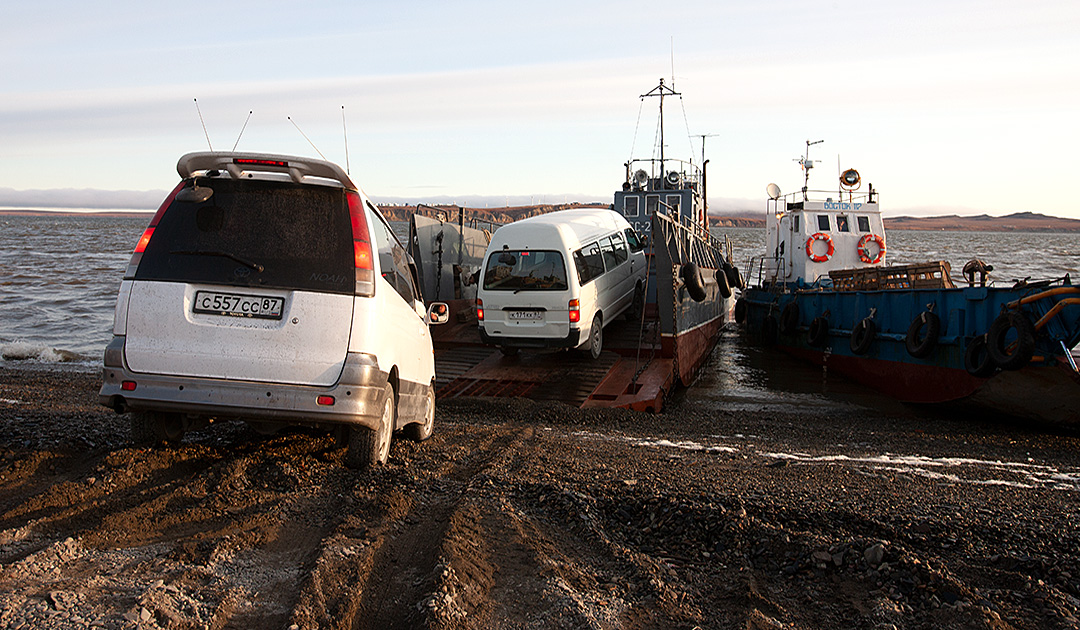
The capital of Chukotka, Anadyr and the village of Ugolnyje Kopi, where the airport is located, are separated by an estuary. A stable all-year connection is now to be built to secure transportation of people and goods. “Transliman”, an aerial cable car is supposed to direct it. Project planners and government representatives presented the initiative to potential partners of the project at an investment meeting in Moscow.

The main transport problem in the region today is the lack of a reliable connection between the city of Anadyr and the airport in Ugolnyje Kopi.
In winter, i.e. from about December to April, the estuary is frozen. The connection is nevertheless guaranteed via an ice road. In ice-free months, rickety ferries run. In the intermediate months it is sometimes difficult to reach the other shore. Helicopters help at times. Despite the obvious variety of vehicles, none of the transport options offers regular passenger and freight transport. At the same time, traffic through the Anadyr estuary consists of more than 60,000 people per year, 80% of whom are flight passengers.

The idea of the air bridge, which reliably connects the airport to the regional capital, was supported by the Governor of Chukotka, Roman Kopin, and the federal authorities, which are represented by the President’s representative in the Far Eastern District, Yuri Trutnev. The previous public presentation of the project took place at the EDF-2019 (Eastern Economic Forum) in Vladivostok. At that time, the study mainly concerned a technological solution. In the past year, the initiative has taken on a significant impact. Today it is a concession project with a clear social orientation. The aim of the cable car is not only to solve the problem of the transfer of passengers, but also to facilitate access for the inhabitants of Ugolnyje Kopi and some surrounding villages to the social infrastructure of Anadyr. “The creation of year-round transport links means the creation of a conurbation of 20,000 inhabitants,” the project’s presentation reads.
Today unreliable connection
Today’s cost of the crossing ranges from 200 rubles for a ticket on the ferry boat to 2800 for a ride with a hovercraft. However, these crossings are only possible in summer and at times very unreliable. The timetable is usually adhered to when an aircraft arrives, with more passengers bringing in more revenue. In the evening and in the early morning, a crossing is practically impossible.

The cable car “Transliman” has to offer barrier-free transport all year round at a ticket price of 500 rubles. The line can operate at any time of the day and carry passengers and cargo. There are, of course, weather restrictions, but the tolerance is much greater than with any other means of transport. Operation is possible at wind speeds of up to 25 m/s and temperatures of up to -60 degrees Celsius.
The economics of “Transliman” are mainly due to a non-standard technical solution. The Anadyr cable car is a six-column structure with a height of 80 to 110 metres. Their tips are connected by carrying statically tensioned ropes. The distance between the supports is about one kilometer. Four self-propelled cabins move along the ropes, two of which are equipped with diesel engines, and two more – with electric traction. Crossing the estuary takes about 25 minutes. The maximum transport capacity is 280 people per hour or 20 tons of cargo.
The commissioning of the project, taking into account the inaccessibility of the area, the special climatic conditions and the seasonality of the works, is planned for the winter of 2023-2024. According to preliminary estimates, the investment costs for the project can amount to about 2.7 billion rubles (30 million euros).
Heiner Kubny, PolarJournal





